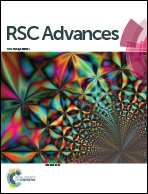Upgrading biochar via co-pyrolyzation of agricultural biomass and polyethylene terephthalate wastes†
Abstract
Spent polyethylene terephthalate (PETE) bottles were collected and co-pyrolyzed with rice straw (RS) to examine the characteristics and performance of biochar as a sorbent for various types of U.S. EPA priority pollutants, including 2,4-dinitrotoluene (DNT), 2,4-dichlorophenol (DCP), Pb, chromate (CrO42−), and selenate (SeO42−). During sorption of contaminants to PETE/RS-derived biochar, PETE residues from pyrolysis, pH, and pyrolysis temperature greatly affected the sorption process. Depending on the types of contaminants and experimental conditions, co-pyrolysis of PETE and RS may enhance the sorption of contaminants through different sorption mechanisms, including hydrophobicity, electrostatic force, ion exchange, surface complexation, and surface precipitation. Unlike other contaminants, selenate was reductively transformed by delocalized electrons from the graphitic structure in biochar. Our results strongly suggest that co-pyrolysis of PETE and agricultural wastes may be favorable to enhance the properties of biochar. In addition to syn-gas and bio-oil from co-pyrolysis, biochar may be a valuable by-product for commercial use.



 Please wait while we load your content...
Please wait while we load your content...